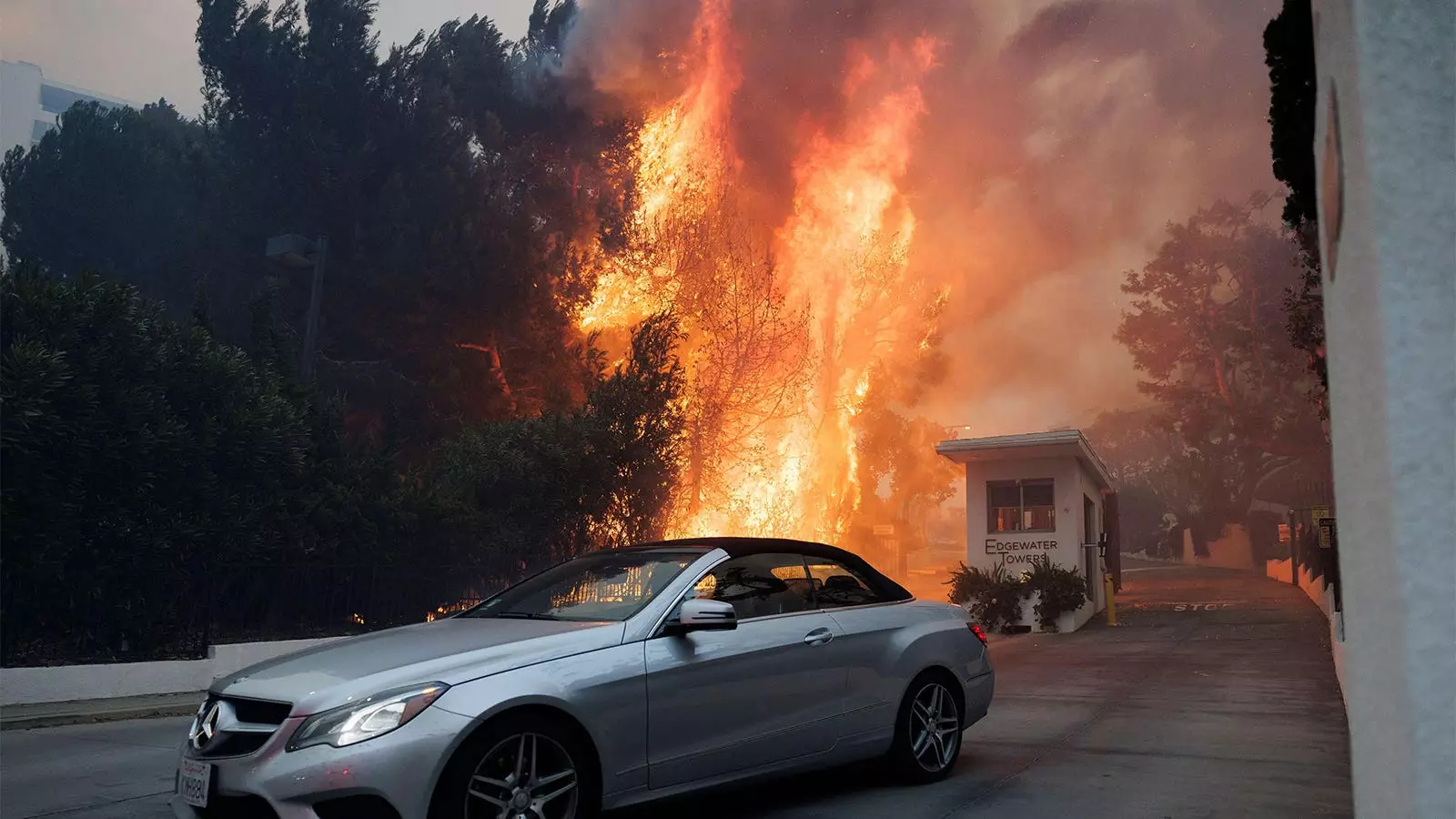Last Friday night, what should have been a standard drive along the 405 freeway turned into an unsettling vision of desolation. Normally buzzing with traffic, the freeway’s emptiness echoed the grim realities facing many as Southern California finds itself inundated with wildfires. As I made my way through the Sepulveda Pass, ominous smoke plumes from the Palisades fire distorted the sky, swirling like an abstract painting steeped in fear and chaos. This surreal landscape projects the alarming environmental crisis we are facing, shifting our view of nature from a tranquil ideal to an uncontrollable force of destruction.
Visible from miles away, the red flames dancing atop distant hills resemble molten lava, reminding us that wildfires are no longer confined to rustic landscapes; they now threaten urban areas where homes and communities lie vulnerable. This phenomenon isn’t just another seasonal occurrence; we stand at a crossroads where man-made structures intertwine with nature’s fury. The toll is severe, with prevalent toxic emissions from burnt buildings and materials, contributing to a toxic cloud that envelops the region, significantly impacting public health.
The implications for public health arising from these wildfires stretch far beyond short-term disruptions. With the release of hazardous chemicals, including particulates like PM2.5 and toxic byproducts from materials in residential and commercial properties, an emergent environmental calamity threatens to inflict severe health complications. First responders, along with residents in affected areas, are grappling with the consequences of their exposure, leading to an alarming rise in emergency medical cases—a telltale sign of an overwhelmed healthcare system.
Moreover, as the relationship between environmental factors and health becomes increasingly evident, the long-term repercussions emerge. Chronic health issues, cancer risks, and immunological challenges lurk just beneath the surface, waiting to be recognized. The mental health burden is no less significant. The traumatic experiences of losing homes or entire neighborhoods leave many residents vulnerable to anxiety and PTSD, startling reminders of the fragility of life amidst nature’s wrath.
As someone who has devoted their career to occupational and environmental medicine, I greatly recognize the pressing demands of this crisis. The role of occupational and environmental physicians extends beyond immediate medical attention; we are tasked with devising strategies that incorporate public health into emergency and disaster management. Our expertise in understanding the environmental hazards inherent in such disasters allows us to rally resources and establish long-term solutions.
Reflecting on the past, our profession has faced natural disasters before—such as the monitoring of first responders post-9/11—and emerged with valuable insights to shape future responses to crises. Moving forward, it is imperative to leverage technology and data analysis in creating real-time environmental monitoring systems. An accessible dashboard that consolidates environmental data, air quality metrics, healthcare facilities, and more could empower communities, allowing them to make informed choices amid chaos.
However, a formidable hurdle lies ahead. The shortage of trained occupational and environmental medicine physicians dwindles our capacity to respond effectively. The number of accredited residency programs has seen a distressing decline, creating a void in the healthcare workforce needed for these environmental emergencies. There is an urgent need for investment in training programs that nurture the next generation of specialists equipped to handle such crises.
As we adapt to these environmental challenges, it becomes critical to advocate for more professionals in our field. By fortifying our workforce, we can build systems designed to promote resilience and recovery, steering communities toward environmental and health independence. The lessons learned from these disasters must fuel proactive strategies that will bolster our defenses against emerging threats.
Los Angeles, facing the reality of its environmental challenges, has the opportunity to emerge not just as a survivor but as a beacon of innovation and resilience. The ongoing wildfires accentuate a concerning global trend—a clarion call for cities around the world to adapt, innovate, and mitigate the ever-growing risks posed by climate change.
With a strategic blueprint that harnesses our collective knowledge, resources, and technology, we can reshape our cities into resilient havens prepared for the storms on the horizon. As we navigate this chaotic landscape, let us envision a future in which our navigation through adversity does not merely aim to endure but dares to thrive.
In the shadow of smoky skies, free from despair, we must remind ourselves of our capacity to adapt and foster change. Together, with a commitment to environmental health, we can rise stronger and more resolute, setting the stage for a transformative approach to our relationship with nature—an alliance built on understanding, respect, and resilience.


Leave a Reply